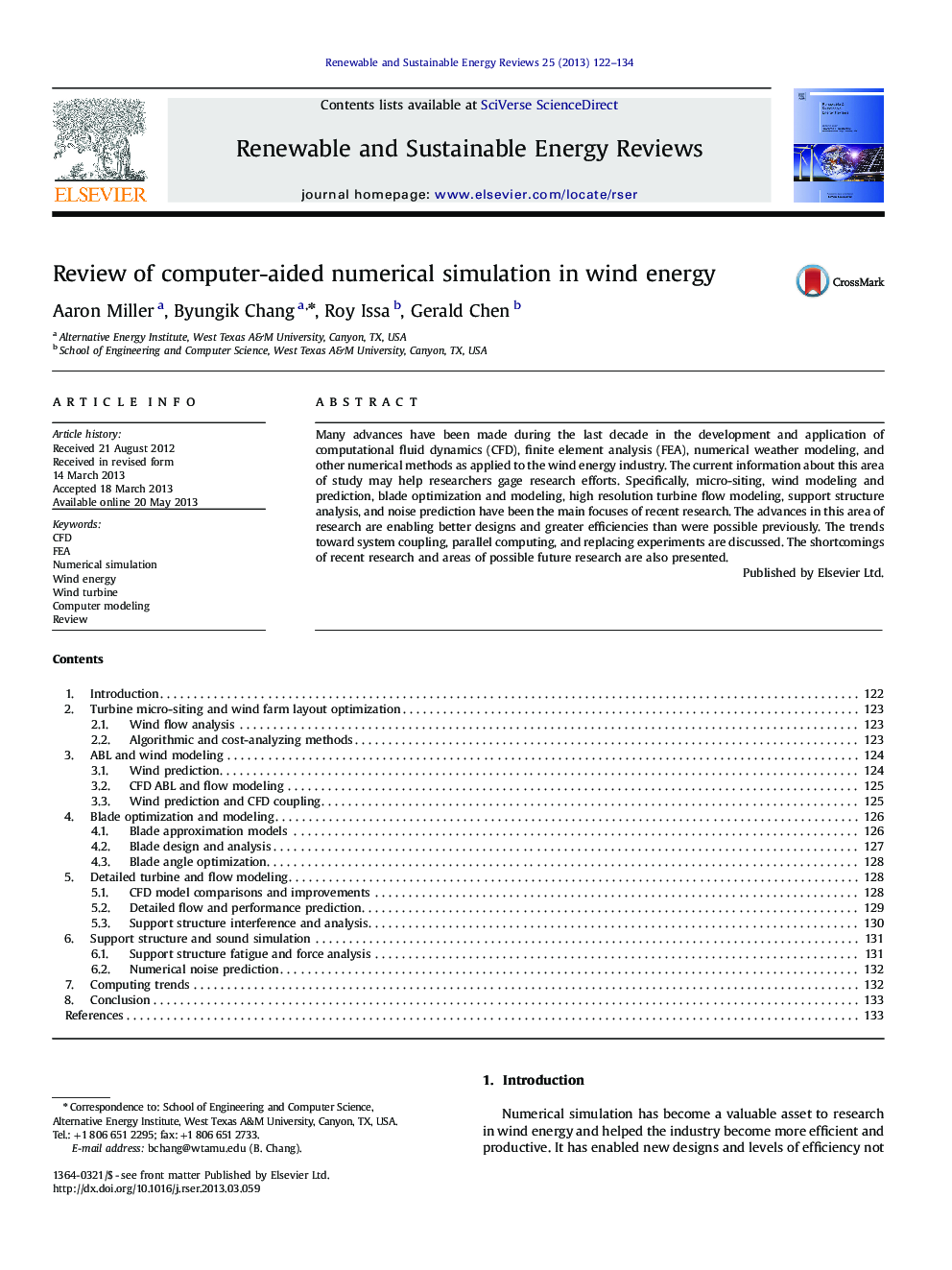| Article ID | Journal | Published Year | Pages | File Type |
|---|---|---|---|---|
| 8121442 | Renewable and Sustainable Energy Reviews | 2013 | 13 Pages |
Abstract
Many advances have been made during the last decade in the development and application of computational fluid dynamics (CFD), finite element analysis (FEA), numerical weather modeling, and other numerical methods as applied to the wind energy industry. The current information about this area of study may help researchers gage research efforts. Specifically, micro-siting, wind modeling and prediction, blade optimization and modeling, high resolution turbine flow modeling, support structure analysis, and noise prediction have been the main focuses of recent research. The advances in this area of research are enabling better designs and greater efficiencies than were possible previously. The trends toward system coupling, parallel computing, and replacing experiments are discussed. The shortcomings of recent research and areas of possible future research are also presented.
Related Topics
Physical Sciences and Engineering
Energy
Renewable Energy, Sustainability and the Environment
Authors
Aaron Miller, Byungik Chang, Roy Issa, Gerald Chen,
